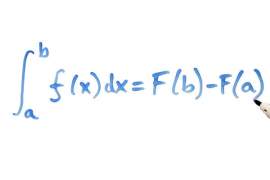
Investment Calculator

How to Calculate Returns on Investments Whenever you make an investment, you have the change to make more money on it, which is called a return. For example, if you put money in a bank account pays, you receive interest which is the return investment. You earn a small amount of interest on this investment because you allow the bank to hold on to your money. The bank then lends your money to other people or organizations at a higher interest rate. Many investment calculators will help you calculate the ROI, or the Return on Investment. This calculation is frequently performed in order to help determine whether a particular investment is worthwhile. Investment Calculators: How to Figure out the Return on Interest Using an investment calculator to figure out the Return on Interest of an investment is the first step to seeing whether an investment is worth having. If you do not have an investment calculator on hand, you just perform a simple calculation to determine your returns. The more complicated the proposal, the more difficult it may be to calculate the Return on Investment accurately without the use of any investment calculators. If you are dealing with a small or moderately sized investment, it may be okay to do the calculations yourself. However, if the investment proposal is larger, you should seek the assistance of a financial analyst or an accounting expert. They will be more thorough in providing calculations about your investments in comparison to an investment calculator. If you want to calculate the Returns on Investments on a proposal without an investment calculator, add up the total value of the investment's benefits and subtract this value from the costs. In many cases, you will also need to take into account for any time required for the investment to pay for itself fully. Depending on the type of investment, it may take more or less time for this. A payback of up to three years is a usually considered a worthwhile investment. In order to calculate the Return on Investment (with or without an investment calculator), you will need two main pieces of information. • The net profit or the revenue from the investment • The investment or the cost of the investment You should also decide on what period you are measuring the Return on Investment for. If you are looking to figure out the Return on Investment for the last month or the last year, both the revenue and the cost should reflect that. The equation for measuring the Return on Investment is the following: [ (Revenue from Investment-Cost of the Investment) / (Cost of Investment)] x 100 = Return (%) As you can see by the equation, the return on investment is usually given as a percentage. When you are using this equation, you have to consider all the costs of the investment. In order to avoid forgetting about the hidden costs, you should ask yourself these questions about any potential investments: • How much are the upfront initial costs involved with this investment? • Are there any taxes or potential fees associated with this investment? • Are there any maintenance costs or fees for this investment? • Will there be any research costs to properly evaluate this investment? • How much time will this investment require? • If it is for a business, how many people are needed, what will the labor rates be and for how many hours, will there be consulting fees or and training fees, and will there be extra costs for supplies, hardware, software, etc. You should also think about what returns you will expect to gain from this investment and in what time period. Investment Calculators: Example on Determining the Return on Interest If you are unsure on how to use the equation to calculate the Return on Interest without an investment calculator, here is an example to make it easier. Again, you will be using this equation: [ (Revenue from Investment - Cost of Investment) / Cost of Investment] x 100 = Return on Interest (%) If you have an investment that during a one year period cost you $4500, and you have measured your total revenue to be $8000 during that year, you can plug in the values to get the following: [ ($8000 - $4500) / $4500 ] x 100 = Return on Interest (%) The first step is to subtract the revenue from the cost (which is the calculation in the parenthesis. Doing this will give you the following: [ ($3500) / $4500 ] x 100 = Return on Interest (%) The next step is divide the value in the parenthesis by the cost of the investment. This becomes: .7778 x 100 = Return on Interest (%) The last step is to multiple the decimal number by 100 to convert it into a percentage: .7778 x 100 = 77.78% = Return on Interest (%) Investment Calculators: Calculating the Payback Period of an Investment Some investment calculators will also provide an option to determine the payback period. This payback period is the period of time it takes for a return on your investment to be equal to or "repay" the original sum of the initial investment. You can calculate the payback period with an investment calculator or by doing the calculations yourself to determine just how long it will take an investment to pay for itself. In order to calculate the payback period without the use of an investment calculator, you can use the following equation (note that the variables are in respect to a period of time): Costs of Investment / Benefits of Investment = Payback Period The benefits of in this equation are not the same as the return. Benefits are just your net returns, or your total returns subtracted from your costs. Returns - Costs = Benefits In more advance calculations, you will also want to look at certain other factors when determining the benefits: • How much have you reduced costs with these benefits • Has productivity increased • Have you improved the process of investing • Have you reduced waste As mentioned before, you will want to ensure that your investment has an adequate return over a period of time. An investment should be able repay the original investment in at most three years. Investment Calculators: Example on Calculating the Payback Period of an Investment It is very easy to calculate the payback period of an investment without using an investment. To do you, you just need to know the cost and the benefits of the investment, which you should know already if you have calculated the Return of Investment. Using the same values as in the example of calculating the Return of Investments, assume that the cost is $4500 each year and the return is $8000. The first step is to determine the benefits by subtracting the returns from the cost. Doing this gives you the following value: Returns - Costs = Benefits $8000 - $4500 = $3500 When you plug these values into the payback period equation, you get the following Costs of Investment / Benefits of Investment = Payback Period $4500 / $3500 = Payback Period When you divide the cost of investment by its return, you get the following. $4500 / $3500 = Payback Period = 1.286 per year Note that this payback period that you have calculated without an investment calculator is in years because the investment cost and the return values are both for a year. This means that in a little more than one and a quarter years, the investment will pay itself off. You can also choose to write this payoff period in months rather than years by multiplying the value by 12. Doing so gives you the following: 1.286 years x (12 months/year) = 15.432 months This means that your investment will have a payback period of about 15 and half months. Investment Calculators: Other Ways to Measure Investments If you want to go a little more in depth in measuring your investments, you can try using the simple Dietz method, which is a way to approximate your investment portfolio performance in a time period where cash flows in and out. You can calculate the rate of return of an investment portfolio without needing any investment calculators. The equation is the following: R = (M2 - M1 - C)/[M1 + (C/2)] R is the rate of return of the investment portfolio. M1 is the initial value of the investment portfolio. M2 is the final value of the investment portfolio. C is the total external cash flow of the investment portfolio Additionally, you can use the modified Dietz method, which is also used to determine an approximate value of performance of your investment portfolios but looking at your cash flow when it is money-weighted. You can calculate your investment portfolio with the modified Dietz method without the use of an investment calculator as well. The equation for the calculation is the following: R = Gain / Average Capital Gain = EMV - BMV - CF Average Capital = BMV + ∑Wi x CFi R is the rate of return of the investment portfolio. EMV is the ending market value. BMV is the beginning market value. CF is your net cash flow for a period of time (note that any contributions are positive and withdrawals are negative). Wi is the weight, or the proportion of the total days left in the period after cash flow occurs. It can be measured with this equation: Wi = (CD - Di)/CD, where CD is the total number of calendars where the return is being calculated, and Di is the day where the cash flow happens.



















